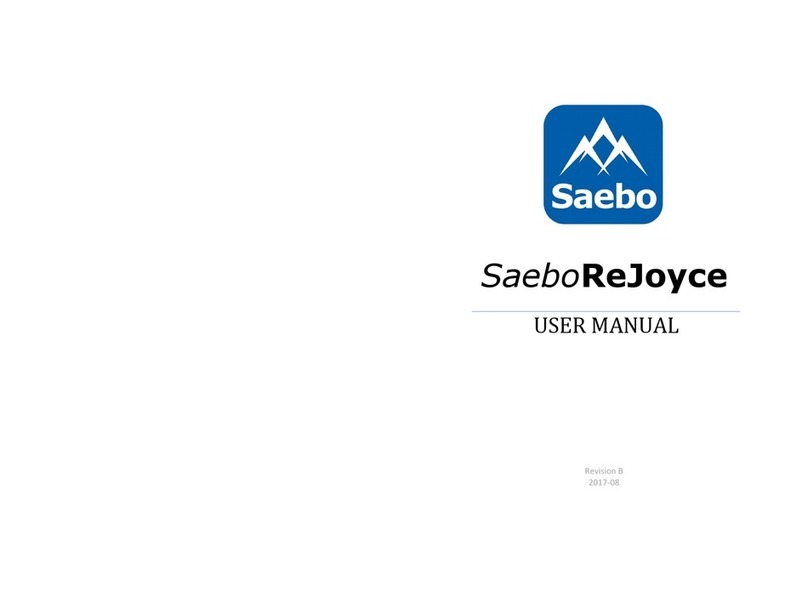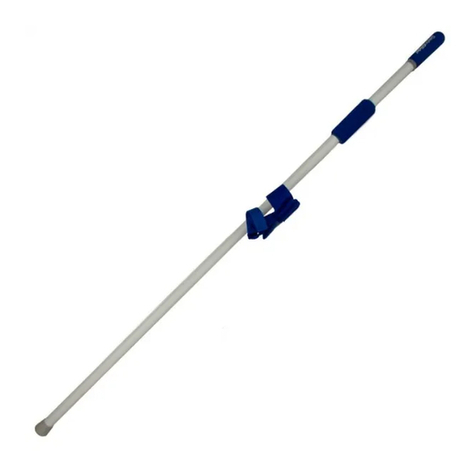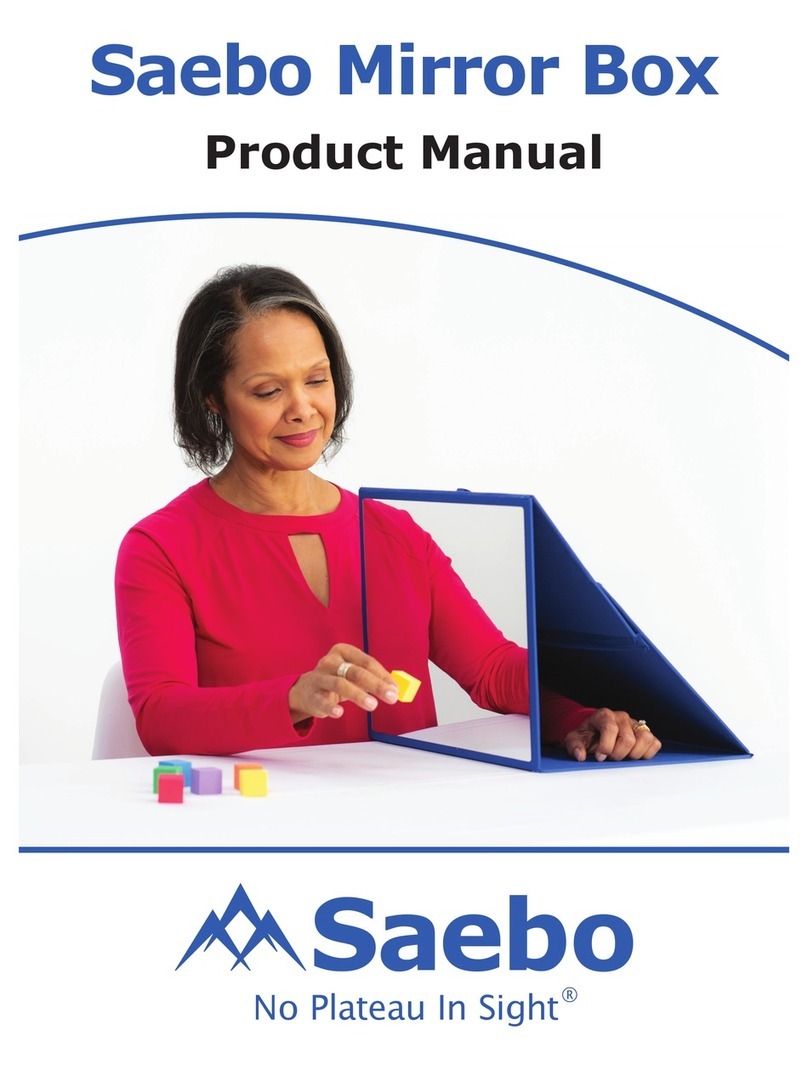
5
SaeboMAS mini Product Manual
E. Apply Elbow Support
Important: What is the Elbow Support and when should I use it?
1. It is highly recommended that the elbow support be
used for any activities involving elbow exion. For
example, all activities that incorporate hand to mouth
movements (i.e., feeding, grooming) will need the elbow
support. This will prevent the Forearm Support from
migrating distally (slip downwards) towards the wrist.
2. To attach the Elbow Support, loosen the Elbow Support
Base Knobs. Thread the Elbow Support into the opening
on the right side. Re-tighten the Knobs to secure the
Elbow Support to the Elbow Support Base (See Figure 8).
3. Be aware that elbow extension will be limited while using the Elbow Support.
DO NOT USE THE ELBOW SUPPORT FOR TASKS THAT REQUIRE ELBOW EXTENSION.
F. Apply Wrist Support
The Wrist Support is ideal for
patients that exhibit “wrist
drop”. To attach the Wrist
Support, loosen the Forearm
Support Base Knobs and thread
the Wrist Support into the
opening. Re-tighten the Knobs
to secure the Wrist Support to
the Forearm Support.
G. Forearm Support Lock
1. One of the unique features of the SaeboMAS mini is the ability
to lock and unlock the forearm support as needed. For example,
patients that exhibit poor strength at the elbow and forearm
may require the forearm support to be in a locked positioned for
increase stability and control (i.e., Forearm Support unable to swivel
vertically/up and down). Conversely, patients that have fair or good
strength at the elbow and forearm may be able to tolerate the
forearm support in an unlocked position (i.e., Forearm Support able
to swivel vertically/up and down).
2. To lock the Forearm Support, rotate the Knob in a clockwise direction
until it threads the hole on the Forearm Support (See Figure 11).
To unlock, rotate the Knob in a counter-clockwise direction.
Figure 8
Figure 11
Figure 10Figure 9
































